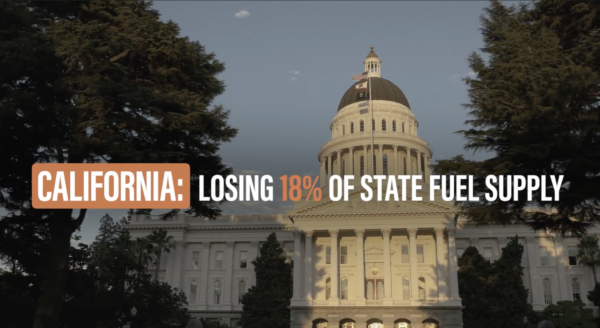Earlier this fall, Governor Newsom signed Executive Order N-79-20 mandating “a goal of the state that 100 percent of in-state sales of new passenger cars and trucks will be zero-emission by 2035.” In addition, the Order called for the end of hydraulic fracturing by 2024.
The new order comes as affordability concerns are already top of mind in California due to the COVID-19 pandemic – on top of the higher household costs consumers have already been paying for years to fund the state’s climate and energy mandates.
As Dan Walters wrote in his CalMatters column before the Order was signed: “to ‘step up our game’ [on climate policy] would impose new burdens on an economy that’s in deep and perhaps prolonged recession. Californians already shoulder electric utility rates, fuel prices, rents, home prices, state and local taxes and other living costs that are among the nation’s highest.”
Walters later called the resulting Executive Order “the latest example of Newsom’s fondness for headline-grabbing pronouncements of ‘big hairy, audacious goals.’”
But while the Governor may have a fondness for audacity and the national spotlight, Californians must live with the burdensome realities of their state’s energy policies.
Politico anticipated that “the governor’s executive order is sure to give rise to questions surrounding the logistics and equity of the transition from internal combustion engines in car-dependent California.”
That prediction certainly came true:
- The California Chamber of Commerce called the order “unrealistic” and said: “Forcing this transition through a mandate will burden the consumers least able to afford it, either by pricing them out of the new vehicle market or increasing the cost to maintain and fuel a used vehicle with a combustion engine.”
- California Business Roundtable President Rob Lapsley said that the “radical step” to ban internal combustion engines is a rushed decision with no guarantee or consideration of affordability for many who live in an already-expensive state.
- In an open letter to the Sierra Club profoundly relevant to the Governor’s order, United Latinos Vote argued: “You want to phase out our polluting cars, the ones we drive to work and take our kids to the park in. It would require us to write hefty checks for those expensive EVs you like so much, and then pay higher energy bills so we can afford to drive them.” The letter also pointed to costly efforts to electrify home appliances and retrofit other buildings, stating: “Your plan sounds like you want us to foot the energy bill for the ‘green’ buildings where you rent office space, while our little businesses go broke with higher energy costs?”
- Assemblymember Jim Cooper, a Democrat representing an area from the southern edge of Sacramento to the northern edge of Stockton, has also criticized the Governor’s order on Twitter and in media interviews. Cooper argues first that his constituents can’t possibly be expected to afford an electric vehicle costing more than $50,000 like the ones featured in the Governor’s press conference announcing the order. He also points out that the state’s electric vehicle rebate program to date has mainly benefitted the wealthy: one affluent senate district in the Bay Area has collected more than 23,000 rebates from the state worth some $55.3 million – a higher sum of rebates than the amount received by seven of the lowest-income senate districts in the state combined.
- “Big and bold ideas are only better if they are affordable for us all,” said Cathy Reheis-Boyd, president of the Western States Petroleum Association. Reheis-Boyd pointed to a University of California Davis study which found that over 20 years the infrastructure costs associated with public charging stations would be $300 to $600 billion – additional costs that are sure to fall to consumers and businesses.
- The California New Car Dealers Association expressed similar concerns over the need to greatly expand public charging infrastructure alongside the need to drive down costs of zero-emission vehicles so that they can be affordable for low and middle-income households.
This cross section of voices raising affordability concerns makes clear: Californians are worried as they look to a future of ever-increasing energy costs driven by expensive policy mandates.


